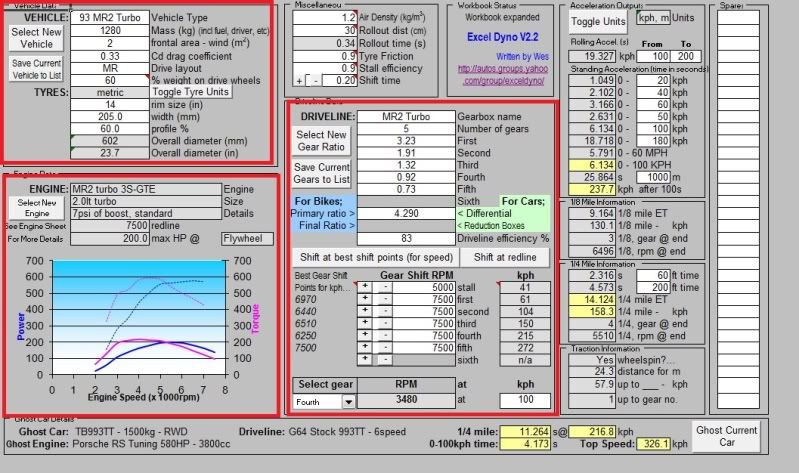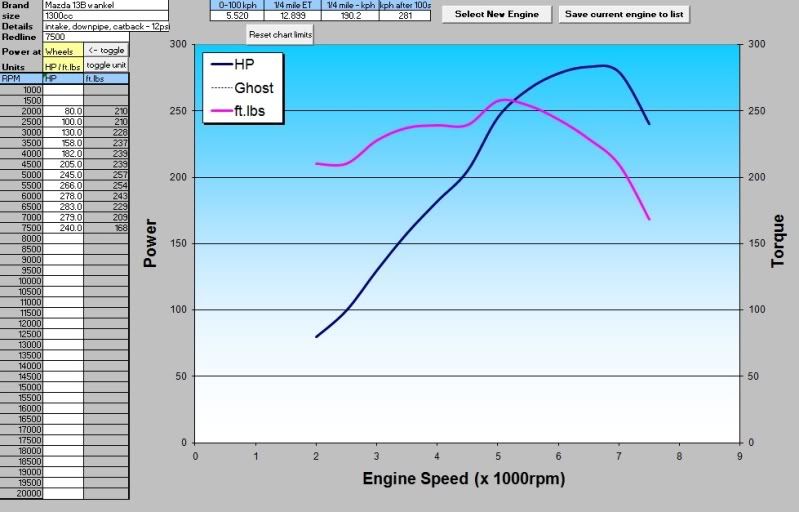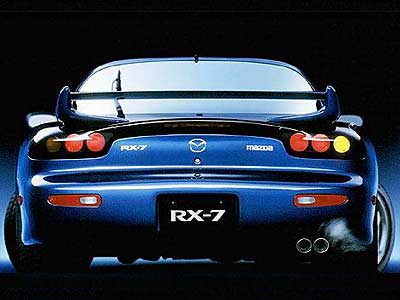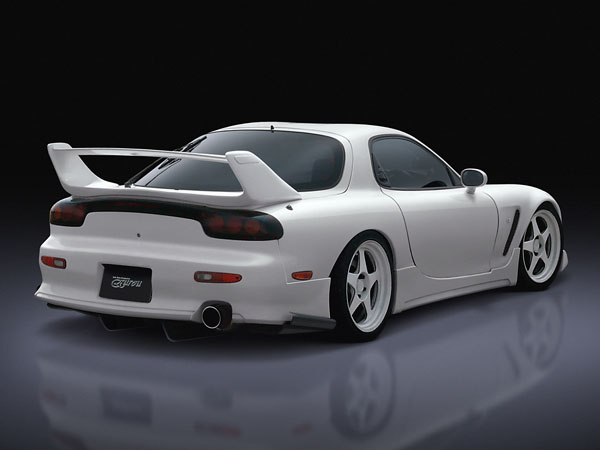Disaster of disasters, Right after summer i lost all my data!! luckily i was exhaustive enough during my posts to recover my work, and will set about doing that right away. I have been giving much thought to the blog and to the Rx-7 in general, and future developments are on the way. Its a shame about all this head spinning, but i found a pic to represent this and cheer me up anyway!!
New Chapter in my quest to find out if a six speed gearbox is any good on the RX-7, and its not looking the way i thought it would.
The numbers are run and the graphs displayed. Since this is a beta, i'll cut to the chase:
It turns out, with the software setup the way i have, the 5 speed is faster than the 6 speed
As you can see, the 5'box is superior in acceleration and top speed. If you count the gear-changes, represented as "bumps" of no acceleration, the two units are equal (the ghost is 6 speed) only through a tiny portion of 4th gear. Remember this is with equal final drive ratios.
So what happened? Well i think i've narrowed it down to two, possibly 3 good reasons.
Reason 1 (Possibly): Engine curve
I may have picked a curve which is too "short", i.e. there is some data missing for higher rpms. The curve I've used, which had the advantage of being very smooth, may not suit the 6 speed very well. However there is no mathematical way to prove that more rpms will close the performance gap, if anything it should move the two curves further up together. There could be a slight acceleration gain from being able to shift later in the power band and drop less revs with the gears being so close together.
Reason 2 (Definitely): Tires
I have issues against this type of tire simulation. There are too many variables like tire wear and temperature which are not considered when calculating the coefficient of friction (mu).
For example: My friend Alessandro recently installed a TD06 SL2 18G turbo on his S15. For legal reasons (and a little drifting) he's running 235/40 17 tires all round. His car is outputting far more power than the RX7 in my simulation, and it wheelspins through all of first, second and a little bit through third gear. In this software, my virtual 285hp RX7 with 265/35 18 tires wheelspins through all of first and second gear when accelerating, with the 5 speed gearbox wheel-spinning less than the 6 speed in second gear.
In total, the 5 speed lights up the tires for 75m vs the 6 speed's 71m upto 108 km/h ! ).
The software can be configured to use different mu values, however the default setting is already 0.9. Slick tires can exceed 1.0, however these quoted figures represent only a "static" value.
In reality, tire grip (as we all now) varies considerably. It would be reasonable to assume that in a situation like the one represented i.e. a drag race, the tires would be hot and considerably stickier than their "indicated" value. More grip can favour the shorter geared six speed as it would allow it to put more power to the ground before exceeding the tire limit.
Reason 3 (Probably): Final drive too short?
My choice to use a 4.1 final drive ratio (same as the stock 5 speed manual) may have backfired. After all, the 5 speed gearbox is designed specifically with that ratio in mind. It could be possible that by just slotting in a 6 speed and keeping the stock differential, all I am effectively doing is adding a gear between 4th and 5th, thereby hampering performance more than adding to it. Research is needed on the longest final drive available for the RX-7. Perhaps by using a six speed and a longer final drive there can be benefits, but so far I've proven that swapping gearboxes and using the stock final drive
does not work.
Stay tuned for Beta 2
So, time to get cracking with the data I've gathered so far.
This is Excel Dyno's input screen. I've boxed in red the required input data:
The top box "Vehicle" requires all the vehicle specific information. Note that % weight on the rear wheels is not equal to the weight distribution of the car. Since this program simulates the car accelerating in a straight line, the actual % weight should also take weight transfer to the rear wheels into account. I've calculated this based on the assumption that the static weight distribution of the RX-7 is 50/50, the CG is located at 1/3 of the total height of the car and a longitudinal acceleration of 0.5G.
I couldn't find any information regarding the FD3S's frontal area. be it the 93-99 or the 99+ version. All i could find out was that it was "revised" for the face-lift. Danke very much. Since it is a vital part of the simulation (the program neglects air resistance if this data isn't provided) I've had to guesstimate it based on whatever information i could find about other cars. I am aware that this will generate a significant amount of error compared to real world results. However, since this value is kept constant throughout the comparison, it does not affect the outcome of the test.
Note: While looking for data regarding frontal area, i came across various forum threads which suggested this could be measured. Either by working on the car with a tape measure, or by heating the car's body in the oven and throwing it against a huge block of cheese to measure the imprint. While i can understand that most people don't care about how big the surface that moves the air is on their car, it's a pity the information isn't readily available to enthusiasts.
On to the engine
 Excel Dyno requires the construction of power and torque curves through a table as you can see on the left. There is an option to specify whether the input data is power to the wheels or flywheel, further adding to the accuracy of the test and saving the user precious time. The problem is unless you dyno the car yourself and input the data acquired (which is probably the way the program is intended to be used) it is extremely rare to find horsepower and torque curves with values in table format on the net. Fortunately however I don't actually need a torque curve, since the program calculates torque automatically (yes, in case you didn't know horsepower is a function of torque) There are plenty of dyno charts to choose from online and one website seems to have collected a fair few of them: http://www.catenet.net/dyno.php
Excel Dyno requires the construction of power and torque curves through a table as you can see on the left. There is an option to specify whether the input data is power to the wheels or flywheel, further adding to the accuracy of the test and saving the user precious time. The problem is unless you dyno the car yourself and input the data acquired (which is probably the way the program is intended to be used) it is extremely rare to find horsepower and torque curves with values in table format on the net. Fortunately however I don't actually need a torque curve, since the program calculates torque automatically (yes, in case you didn't know horsepower is a function of torque) There are plenty of dyno charts to choose from online and one website seems to have collected a fair few of them: http://www.catenet.net/dyno.phpThere is an embarrassing level of choice, from 20B to 13B engines, with varying level of modifications (all declared) and age. I tried to choose a relatively stock 13B with a little over 10psi of boost and a smooth curve, and ended up selecting this:
http://www.catenet.net/graph.php?car177=1&SUBMIT=GRAPH
which belongs to Bill Setter. Congrats Bill on the nice looking graph.
Once entered in the program, it looks like this:
The generated torque curve seems to duplicate the behavior of the stock twins very well, which is a good sign.
And now, the driveline!
Finding the gear ratios for the cars mentioned in Part 1 was (thankfully) easy. I kept the final drive ratio the same as stock (4.1) in all cases, because as i mentioned earlier, it isn't part of the gearbox but of the differential. This should level the playing field enough to declare a clear winner. Driveline efficiency was set at 80%, roughly standard for a 5/6 speed synchronized manual with trans-axle drive to the rear wheels.
Here is the list of ratios:
Next its play time!
So time to start the first massive post, or series of posts. As per the title, i'll be looking at the effects of this swap on the 7.. without actually doing it. Effectively I'm going to simulate the results using a few equations and calculations i learned at school, with the help of a nifty little program called Excel Dyno.
This is a simple spreadsheet program with lots of the more common engineering formulas already embedded into it. Things like a simple distance vs time graph, as well as gradients, traction and shift points are automatically calculated based on the data supplied. So the program is only as accurate as the data that's given to it, a daunting premise given that I don't actually have a car to the record data from and the data gathered from the net has no accuracy guarantee.
Nevertheless, part 1 is dedicated to collecting said data.
If you're interested in doing this yourself to your own car, Excel Dyno is available here:
http://offroadvw.net/exceldyno/
All credit goes to Wes for this uber little big spreadsheet.
Why?
Strictly speaking there is no real reason to swap the standard gearbox for another one. The stock 5 speed is sturdy and reliable with a very pleasant shift feel. However. There are advantages to having an extra gear, the most important of which is cruising speed (engine speed) given by the last gear ratio and the final drive combined. Cars generally spend a lot of time on the freeway (or Autostrada in Italian). My 7 will be no different. I have lots of experience with 5 speed cars on the freeway, and every time i drive one, i keep asking myself if the world would be better without them. The 7 isn't a parsimonious car to start off with, so anything i can do to improve its real world performance without changing the feel of the car is absolutely worth it.
Swapping a gearbox is very expensive and time consuming. Using a simulation is the best way to actually gauge the improvement before spending valuable time and considerable money on the swap.
Which box?
There are 3 options to choose from that have already been attempted.
Tremec competition box
Toyota Supra box
Aisin AZ6 (Honda S2000 Mazda MX-5 RX-8, Toyota Altezza box)
of these 3, the Aisin is definitely the most palatable. The Toyota box is overkill, as i never plan to produce four figure horsepower numbers and it is considerably heavy. Tremec boxes are extremely costly, rare to find in H pattern configuration and are generally available with very short ratios.
The AZ6 on the other hand, is widely available from a scrapyard in good nick, as there are no less than four cars to pull it from. Each car also has unique gear ratios which range from short to relatively long.
Note: changing gearbox has no effect on final drive. The final drive gear set is contained in the differential and must be substituted separately. I will be throwing different final drives (fd?) into the simulation to see which combination of gearbox / final drive is most effective, both with the new and stock transmission.
And now that you've read all that, on to Part 1.1! lol
Well its been a while, but the research is ongoing!
New template to the blog, i didnt like how the last one looked / worked. This one is much better. Still a little work necessary before it is 100% complete, but so far so good.
Also, I have been working on two very VERY large posts regarding the plausibility of a gearbox swap and an engine swap and have been studying properties of some racing radiators to quell the wankel's propensity to overheating.
Nothing quite as sentimental going on, but an article i read on Autospeed made me fall in love with the RX-7 all over again.
The car's aerodynamic properties are obvious just by glancing at it, but the numbers are still impressive. A wingless Cd of just 0.29 makes it cut through the air like the proverbial arrow shot by everyone's favorite blind flying baby. And even with the lip and spoiler, the Cd rises to 0.31, not too shabby for 90's sports car with factory aero mods! To add to the sweetness, the rear lift coefficient is practically negligible, 0.08. Despite the amazing attached flow on the rear end of the car. That would supposedly make any wing placed on the rear deck immensely efficient, right?
Admittedly, it is a small fly. Mazda's wind tunnel data, although unreferenced by Autospeed, shows that post stock R2 pack fitment, rear lift is completely unchanged. I.E. either Mazda is messing with the figures (likely) or the stock rear wing/spoiler design is naff and only cosmetic (just as likely), while the front lip is actually doing a good job of reducing lift, slashing it by a good 30%. Autospeed attributes the low rear lift figure to good use of underbody flows, and I tend to agree with them.
This (brief) clip of data helps explain a lot of trends in the Rx-7 aero upgrade market. Certainly, the company that makes most use of underbody flow is Scoot, for their wide bodied 4 rotor. By keeping the roof section and front nose pitch unchanged, Scoot are able to keep the excellent roof flow, while a huge rear diffuser and a subtle rear spoiler do the downforce dirty work. While this is technically very commendable, Its pretty obvious this kind of bodywork setup won't work for the street, or daily grind. The rear diffuser works well thanks to the lengthened tail section, and sticking it on by itself on the standard car won't do much good. By contrast, a setup like FEED's using a smaller diffuser and a GT wing can also cause problems, if not by having to depend solely on a huge aero add-on to keep the car stuck to the ground, it is also, in my opinion, ugly and it attracts too much attention for a component that is basically illegal here in Italy. On top of that, the wing area of the car isn't the only part of the car that could be improved.
So, if you want to go fast and not die young, what should one do? Well thankfully there are a lot of options for the inventive.
Since I've started talking about rear wings, I'll begin by closing that issue. There are lot of options out there on the market, but the only two worth considering that check all the boxes for aesthetics and functionality are:
So i thought I'd kick start this blog with a little suspension talk.
Thankfully there are a lot of suspension options for the FD, thanks to, by a large degree, the tuners who run the car in touge battles and GT racing.
Fortunately or not, most aftermarket setups tend to be quite hard. While RE-Amemiya and FEED run their cars with 18kg/mm Swift springs front and rear, the other "mild" sport coilover options range from 16kg/mm to 7.4 at the front, 5.8 at the rear.
There is a wealth of suspension information available at FD3S.net with some useful testimonials on daily driven setups.
However (aaah, thought it was that easy did you?)
Seeing that PRX7 will pretty much be a dual purpose commuter weekend racer car, my doubts were as to whether or not a single setup "sweet spot" was appropriate. On top of that, the other recurring questions were: how do the OEM's do it? and is there a way to make the car soak up the bumps and still corner properly? Must... seek... answers....
To this end i had a conversation with esteemed colleague and fellow blogger deamoncynos7 about using harder anti roll bars and softer springs. The theory behind my idea would be using the anti roll bars to sustain some of the axial loading during cornering, while keeping a streetable suspension stiffness for badly paved roads etc.
We both agreed that harder anti roll bars would reduce suspension travel, which can be a problem over bumps. However this could be solved with appropriate rebound valving adjustments. Also, harder bars would oppose the weight transfer during cornering, which can lead to some "interesting" results when pushed hard.
Plan B would be to use a system like the EDFC or the equivalent by Tanabe to electronically adjust damping force with a push of a button. hard when you wanna go, soft when you wanna show, if that's your thing.
I see why it could be useful, but, the truth is that even though there is more than one correct damper/spring setting, having 12kg springs on the softest damper setting wont solve the ride harshness problem. The car will still crash over the bump, regardless of how well damped the crash is.
I'll be giving the subject some extra thought over the next few days, and hopefully run some numbers on some suspension diagrams. Suspension settings are a black art.
When Mazda first released the E-FD3S RX-7 back in 1993, Japan's economy was booming, and Mazda's engineers were on a roll. They had just produced a car with the world's first ever mass produced sequential twin turbo system, a chassis that is competitive even today and given it timeless looks. The only real problem with the RX-7 back then, was its price. It was a massive move upmarket from the previous generation "cheap and cheerful" FC, and owners who opted to trade in their old wankel for the new version left the showrooms understandably shocked. To make matters worse, service costs for the finicky twin turbo wankel engine were astronomically high, with only few specialized centers qualified by Mazda.
A few years later the economy bubble burst, Mazda's monetary problems worsened, leading to the Ford buyout. The RX-7 was pulled from most markets, while it still soldiered on in Japan until 2002 in various versions even after restyling in 1999. The ultimate version was the Spirit R Type A. Mazda sold very few
RX-7's during the entire production run, and only 500 Spirit R's were made, so it's quite rare to see this car on the road. Yet it's instantly recognized by the car loving public. The reason for this is competence more than popularity. Mazda never entered the FD3S in major touring or endurance competitions around the world officially, but independent tuners have been successfully racing them for almost twenty years. The full racing accolades can be found on Wikipedia, along with the full biography if needed.
so what do i plan to do with it?
I've never been a fan of all out race converted street cars. Some people find it gratifying, I don't think it's worth the hassle. Nor do i want a soft and cosy minature luxury car to flaunt at the nearest high class social gathering. I believe that the right solution is a blend of different properties. The perfect car to me is a car that is never out of place or inappropriate, or rather one that doesn't force it's owner to make sacrifices. And with modern technology and a bit of clever engineering, it is possible to fast and frugal, to corner flat and not die over speed bumps, to have downforce and not look like Dom Toretto. I will be approaching and thoroughly re-engineering the car in as many ways as possible to achieve these goals, in all areas from engine to aerodynamics, documenting research and progress along the way. It'll be a pretty long process but the results will be very interesting...
















